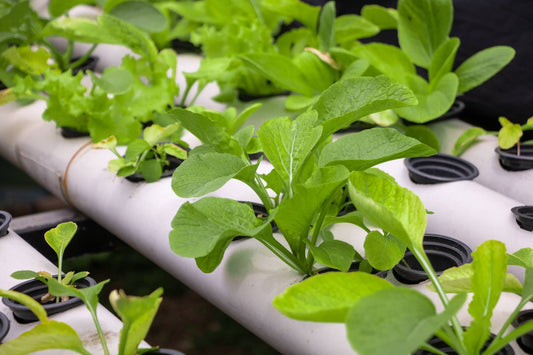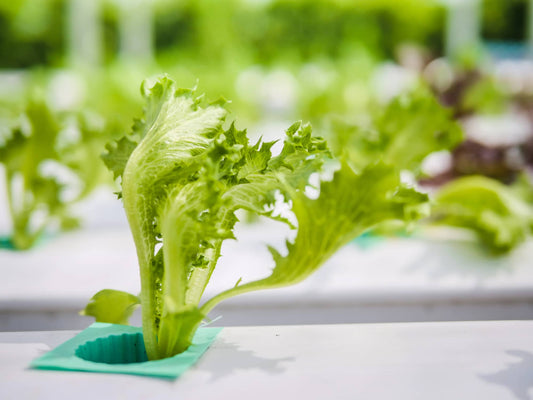Cucumbers are among the fastest-growing and most rewarding crops to cultivate hydroponically. With their vigorous vining nature, high water demand, and sensitivity to soil-borne diseases, hydroponics provides an ideal environment for maximizing their potential. By controlling nutrients, light, and climate, growers can achieve faster growth, higher yields, and year-round production without the limitations of traditional farming.
This guide will walk you through every step of successful hydroponic cucumber cultivation, from system selection to harvesting, ensuring you get crisp, healthy, and abundant cucumbers every time.
1. Choosing the Right Hydroponic System
Each hydroponic system offers unique advantages. Choosing the right one for your needs depends on your available space, level of experience, and desired yield.
Nutrient Film Technique (NFT) – For Fast, Compact Growth
NFT is an efficient system where a thin film of nutrient solution continuously flows over plant roots. It is most effective for smaller cucumber varieties and commercial setups. As the roots are consistently bathed in oxygenated nutrients, plants grow quickly and vigorously. However, NFT requires stable water flow; any pump failure can quickly dry out the roots.
Deep Water Culture (DWC) – For Large, Thriving Plants
DWC immerses roots in aerated, nutrient-rich water, ensuring a continuous supply of hydration and oxygen. This method promotes vigorous root growth, making it ideal for larger cucumber varieties. It’s an excellent choice for beginners due to its simplicity; however, water temperatures must be monitored to prevent root diseases.
Drip System – For Precise Nutrient Delivery
The drip system is widely utilized in commercial operations because it provides controlled nutrients directly to plant roots. This adaptable and scalable system enables growers to modify feeding schedules for optimal growth. However, it requires careful monitoring to avoid salt buildup from excess nutrients.
Ebb and Flow (Flood and Drain) – For Balanced Hydration
This method saturates the root zone with nutrients at intervals before draining back into the reservoir. It is especially effective for robust, deep-rooted plants like cucumbers. The intermittent drying between saturations promotes root growth, enhancing plant strength and resilience.
2. Selecting the Best Cucumber Varieties
Not all cucumbers are ideal for hydroponic growth. Choosing the right variety will maximize your yield and simplify your growing process.
Why Choose Parthenocarpic and Gynoecious Cucumbers?
- Parthenocarpic cucumbers do not require pollination, making them ideal for indoor hydroponic systems.
- Gynoecious varieties mainly produce female flowers, leading to increased fruit production.
Top Varieties for Hydroponic Success
- Burpless Tasty Green – Mild flavor and thin skin, perfect for fresh salads.
- Socrates F1 – Compact growth, great for smaller spaces like home hydroponic setups.
- Corinto F1 – Disease-resistant and high-yielding, ideal for beginners.
- Picolino F1 – Miniature cucumbers with fast production cycles.
- Telegraph Improved – A classic long cucumber variety, great for greenhouses.
By selecting a variety that suits your hydroponic setup, you set yourself up for a more productive and enjoyable growing experience.
3. Creating the Perfect Growing Environment
Hydroponics allows you to establish optimal conditions for cultivating cucumbers. Each factor—temperature, humidity, lighting, and airflow—plays a vital role in the success of your plants.
Temperature: Keeping It Just Right
Cucumbers thrive in warm environments, but extreme heat or cold can slow growth and impact fruit quality.
- Ideal daytime temperature: 75-82°F (24-28°C) ensures rapid growth and fruit production.
- Ideal nighttime temperature: 65-70°F (18-21°C) supports healthy respiration.
Why it matters: Keeping temperatures stable prevents stress, reducing the risk of bitter fruit and ensuring continuous flowering.
Humidity: Striking the Right Balance
- 50-70% humidity prevents excess moisture that could cause mold, while keeping leaves hydrated.
- Use proper ventilation to prevent fungal diseases like powdery mildew.
Pro Tip: Setting up a simple fan system guarantees fresh airflow, minimizes disease risks, and enhances plant structure.
Lighting: Powering Your Plants
- Cucumbers need 14-16 hours of bright light daily for strong vegetative growth and fruiting.
- Use LED or HID grow lights to mimic natural sunlight.
- Light intensity should be 300-600 µmol/m²/s to maximize photosynthesis.
Why it matters: Insufficient light leads to weak vines, small fruit, and delayed production—keep your cucumbers well-lit!
4. Mastering Hydroponic Nutrients
Nutrient balance is the key to success. A well-fed plant produces large, crisp, and flavorful cucumbers.
Essential Nutrients and Their Roles
|
Nutrient |
Purpose |
|
Nitrogen (N) |
Builds lush, green foliage and strong vines. |
|
Phosphorus (P) |
Stimulates root growth and encourages flowering. |
|
Potassium (K) |
Enhances fruit development and overall plant health. |
|
Calcium (Ca) |
Prevents blossom end rot and strengthens cell walls. |
|
Magnesium (Mg) |
Supports chlorophyll production for vibrant leaves. |
Keep Your pH in Check!
- Cucumbers grow best at pH 5.5 - 6.0.
- Keep EC (Electrical Conductivity) at 2.0 - 2.5 mS/cm to maintain optimal nutrient absorption.
5. Training Your Cucumber Vines for Maximum Yield
Since cucumbers are vining plants, they require support and direction for best results.
Trellising: Growing Up Instead of Out
- Use vertical netting or trellises to support vines.
- Directing growth upwards saves space and increases air circulation.
The benefit: Trellising reduces disease risk, improves fruit quality, and makes harvesting easier.
Pruning: Focus Your Plant’s Energy
- Remove lower leaves to increase airflow.
- Trim excess side shoots so the plant channels energy into fruit production.
Why it works: Less energy spent on excess growth means more energy for bigger, tastier cucumbers!
6. Harvesting: The Reward of Your Hard Work
Cucumbers grow fast in hydroponics, often ready in 50-70 days.
Signs It’s Time to Harvest
- Firm and bright green skin – no soft spots!
- Full size for the variety – check the seed packet for guidance.
- Slight give when gently squeezed – crisp but not hard.
Best Harvesting Practices
- Use sharp shears to cut fruit cleanly.
- Harvest regularly to encourage continuous production.
- Store at 50-55°F (10-13°C) in high humidity for freshness.
Why it matters: The more you harvest, the more your plant will produce! Keep the cycle going for an endless supply of fresh cucumbers.
Final Thoughts: Your Hydroponic Success Story Begins Now
Growing cucumbers hydroponically is a rewarding, efficient, and sustainable way to enjoy fresh produce year-round. By controlling every aspect of their growth, you ensure consistent, high-quality yields with minimal waste.
Start small, learn as you go, and soon you’ll be harvesting cucumbers like a pro! Whether you’re a home gardener or a commercial grower, hydroponic cucumbers promise a future of abundant, healthy, and delicious food.
Ready to start? Let’s grow something amazing together!




